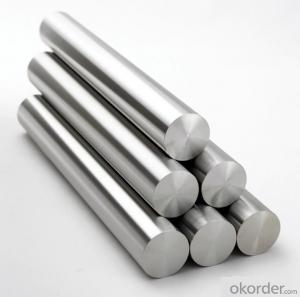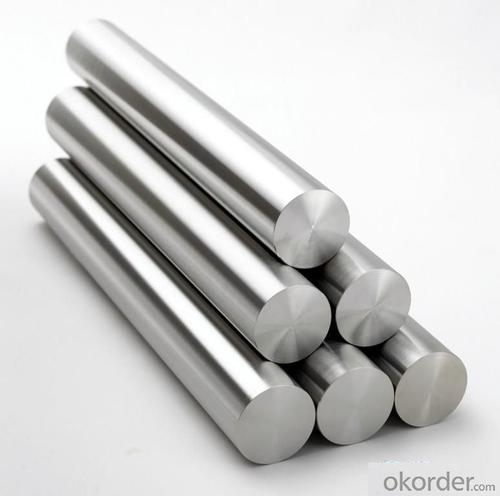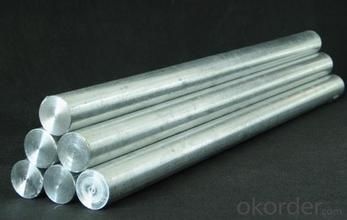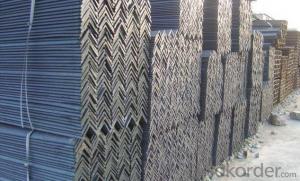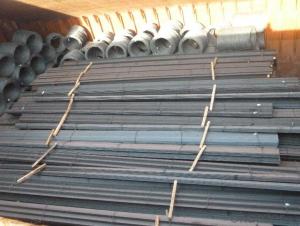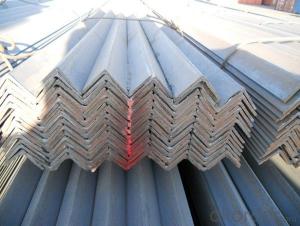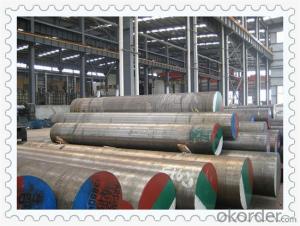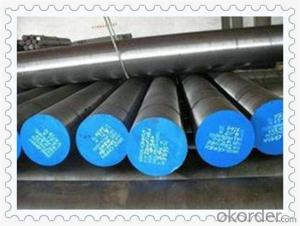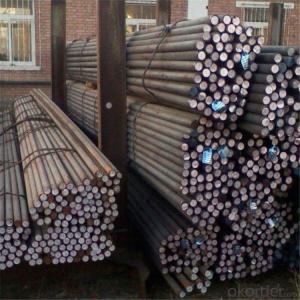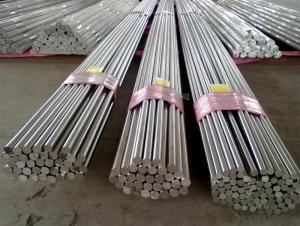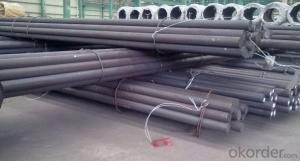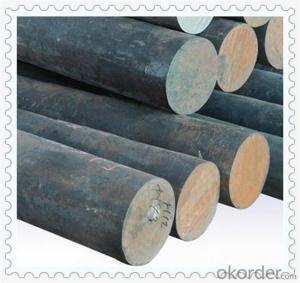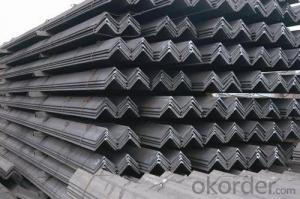SAE1045 Special Steel Round Bar
- Loading Port:
- China Main Port
- Payment Terms:
- TT or LC
- Min Order Qty:
- -
- Supply Capability:
- -
OKorder Service Pledge
OKorder Financial Service
You Might Also Like
Product Description:
OKorder is offering SAE1045 Special Steel Round Bar at great prices with worldwide shipping. Our supplier is a world-class manufacturer of steel, with our products utilized the world over. OKorder annually supplies products to European, North American and Asian markets. We provide quotations within 24 hours of receiving an inquiry and guarantee competitive prices.
Product Applications:
SAE1045 Special Steel Round Bar are ideal for structural applications and are widely used in the construction of buildings and bridges, and the manufacturing, petrochemical, and transportation industries.
Product Advantages:
OKorder's SAE1045 Special Steel Round Bar are durable, strong, and resist corrosion.
Main Product Features:
· Premium quality
· Prompt delivery & seaworthy packing (30 days after receiving deposit)
· Corrosion resistance
· Can be recycled and reused
· Mill test certification
· Professional Service
· Competitive pricing
Product Specifications:
Manufacture: Hot rolled
Grade: Q195 – 235
Certificates: ISO, SGS, BV, CIQ
Length: 6m – 12m, as per customer request
Packaging: Export packing, nude packing, bundled
Chinese Standard (H*W*T) | Weight (Kg/m) | 6m (pcs/ton) | Light I (H*W*T) | Weight (Kg/m) | 6m (pcs/ton) | Light II (H*W*T) | Weight (Kg/m) | 6M |
100*68*4.5 | 11.261 | 14.8 | 100*66*4.3 | 10.13 | 16.4 | 100*64*4 | 8.45 | 19.7 |
120*74*5.0 | 13.987 | 11.9 | 120*72*4.8 | 12.59 | 13.2 | 120*70*4.5 | 10.49 | 15.8 |
140*80*5.5 | 16.89 | 9.8 | 140*78*5.3 | 15.2 | 10.9 | 140*76*5 | 12.67 | 13.1 |
160*88*6 | 20.513 | 8.1 | 160*86*5.8 | 18.46 | 9 | 160*84*5.5 | 15.38 | 10.8 |
180*94*6.5 | 24.143 | 6.9 | 180*92*6.3 | 21.73 | 7.6 | 180*90*6 | 18.11 | 9.2 |
200*100*7 | 27.929 | 5.9 | 200*98*6.8 | 25.14 | 6.6 | 200*96*6.5 | 20.95 | 7.9 |
220*110*7.5 | 33.07 | 5 | 220*108*7.3 | 29.76 | 5.6 | 220*106*7 | 24.8 | 6.7 |
250*116*8 | 38.105 | 4.3 | 250*114*7.8 | 34.29 | 4.8 | 250*112*7.5 | 28.58 | 5.8 |
280*122*8.5 | 43.492 | 3.8 | 280*120*8.2 | 39.14 | 4.2 | 280*120*8 | 36.97 | 4.5 |
300*126*9 | 48.084 | 3.4 | 300*124*9.2 | 43.28 | 3.8 | 300*124*8.5 | 40.87 | 4 |
320*130*9.5 | 52.717 | 3.1 | 320*127*9.2 | 48.5 | 3.4 | |||
360*136*10 | 60.037 | 2.7 | 360*132*9.5 | 55.23 | 3 |
FAQ:
Q1: Why buy Materials & Equipment from OKorder.com?
A1: All products offered byOKorder.com are carefully selected from China's most reliable manufacturing enterprises. Through its ISO certifications, OKorder.com adheres to the highest standards and a commitment to supply chain safety and customer satisfaction.
Q2: How do we guarantee the quality of our products?
A2: We have established an advanced quality management system which conducts strict quality tests at every step, from raw materials to the final product. At the same time, we provide extensive follow-up service assurances as required.
Q3: How soon can we receive the product after purchase?
A3: Within three days of placing an order, we will begin production. The specific shipping date is dependent upon international and government factors, but is typically 7 to 10 workdays.
Q4: What makes stainless steel stainless?
A4: Stainless steel must contain at least 10.5 % chromium. It is this element that reacts with the oxygen in the air to form a complex chrome-oxide surface layer that is invisible but strong enough to prevent further oxygen from "staining" (rusting) the surface. Higher levels of chromium and the addition of other alloying elements such as nickel and molybdenum enhance this surface layer and improve the corrosion resistance of the stainless material.
Q5: Can stainless steel rust?
A5: Stainless does not "rust" as you think of regular steel rusting with a red oxide on the surface that flakes off. If you see red rust it is probably due to some iron particles that have contaminated the surface of the stainless steel and it is these iron particles that are rusting. Look at the source of the rusting and see if you can remove it from the surface.
Images:
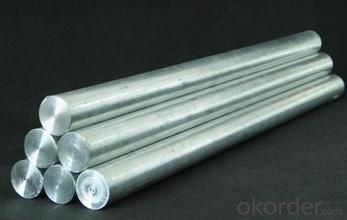
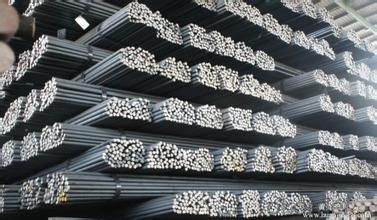
- Q:What are the different surface treatments for steel angles?
- Steel angles offer a variety of surface treatments to enhance their durability, appearance, and resistance to corrosion. Here are some common treatments: 1. Hot-dip galvanizing: Immersing steel angles in molten zinc forms a protective coating. This treatment is ideal for outdoor use, offering excellent corrosion resistance against moisture and harsh weather conditions. 2. Powder coating: A dry powder paint is applied to the steel angles and then heated to form a durable coating. Powder coating provides various color options and improves resistance to chipping, scratching, and fading. 3. Electroplating: Through an electrochemical process, a metal layer such as zinc, nickel, or chrome is deposited onto the steel angles. Electroplating enhances both aesthetic appeal and corrosion resistance. 4. Priming and painting: Applying primer followed by paint creates a smooth surface and improves adhesion. Painting not only enhances appearance but also provides some protection against corrosion. 5. Anodizing: Typically used for aluminum angles but can also be applied to steel, anodizing creates an oxide layer through an electrolytic process. This treatment improves corrosion resistance, hardness, and color stability. Choosing the appropriate surface treatment for steel angles depends on the specific application and environmental conditions. Each treatment offers unique benefits in terms of corrosion resistance, aesthetics, and durability. Considering these factors ensures the longevity and performance of the steel angles.
- Q:How do steel angles perform under cyclic or alternating loading conditions?
- Steel angles perform well under cyclic or alternating loading conditions due to their structural properties. Steel is known for its high strength and durability, which allows angles to withstand repeated loading without significant deformation or failure. Under cyclic loading, the steel angles exhibit a phenomenon called fatigue. Fatigue occurs when a material is subjected to repeated stress cycles, leading to cumulative damage and potential failure over time. However, steel has a high fatigue strength compared to other materials, making it highly resistant to fatigue failure. The shape of steel angles also contributes to their performance under cyclic loading. The L-shaped design provides additional stability and resistance to bending or twisting forces. This shape helps distribute the load more evenly along the length of the angle, reducing stress concentrations and increasing its fatigue life. Furthermore, steel angles can be strengthened through various techniques, such as heat treatment or surface hardening. These processes increase the material's resistance to cyclic loading, making it even more capable of withstanding repeated stress cycles. Overall, steel angles are well-suited for cyclic or alternating loading conditions due to their high strength, durability, and resistance to fatigue. Their L-shaped design and potential for strengthening make them reliable structural components in various applications, including construction, engineering, and manufacturing.
- Q:Do steel angles require maintenance?
- Yes, steel angles do require maintenance. Regular maintenance is necessary to prevent rusting, corrosion, and to ensure their structural integrity. This may involve cleaning, painting, lubricating, and inspecting for any signs of damage or wear. Proper maintenance can help prolong the lifespan and performance of steel angles.
- Q:What are the different types of steel angles used in modular furniture?
- There are several different types of steel angles used in modular furniture, including equal angles, unequal angles, L-shaped angles, and slotted angles. These angles are used to provide structural support, reinforcement, and stability to the furniture pieces.
- Q:What is the typical width of a steel angle?
- The typical width of a steel angle can vary depending on its intended use and the specific requirements of the project. However, in general, steel angles are available in a wide range of sizes and dimensions. Commonly, the width of a steel angle can range from 1 inch to 8 inches or more. It is important to consult the relevant industry standards and specifications to determine the appropriate width for a specific application.
- Q:What are the standard lengths of steel angles?
- The standard lengths of steel angles vary depending on the manufacturer and specific application, but common lengths range from 20 feet to 40 feet.
- Q:What is the maximum spacing for steel angles in a support structure?
- The maximum spacing for steel angles in a support structure depends on various factors such as the load requirements, material strength, and design specifications. However, it is generally recommended to consult with a structural engineer or refer to relevant building codes and standards to determine the appropriate maximum spacing for steel angles in a specific support structure.
- Q:What are the different packaging options for steel angles?
- There are several packaging options available for steel angles, depending on the specific needs and requirements of the customer and the mode of transportation. Some of the common packaging options include: 1. Bundles: Steel angles are often packaged in bundles, which are created by tying together multiple pieces of angles using steel straps or wires. This packaging option is commonly used for larger quantities and provides stability and ease of handling. 2. Pallets: Steel angles can also be packaged on pallets, which are wooden or plastic platforms used for easy transportation and storage. The angles are typically stacked on top of each other and secured to the pallet using straps or stretch wrap. 3. Crates: For added protection, steel angles can be packaged in wooden crates. Crates provide a sturdy and secure packaging option, especially for long-distance transportation or when the angles need to be stored in outdoor conditions. 4. Steel Cages: In some cases, steel angles are packaged in steel cages, which are metal structures with open sides that allow for easy visibility and ventilation. This packaging option is often used when the angles need to be stored or transported in bulk quantities. 5. Customized Packaging: Depending on the specific requirements of the customer, steel angles can also be packaged in customized ways. This may include adding protective materials such as foam or plastic sheets to prevent scratches or damage during transit. It is important to note that the choice of packaging option may depend on factors such as the size and weight of the steel angles, the mode of transportation (road, rail, sea, air), and any specific regulations or guidelines that need to be followed.
- Q:How are steel angles manufactured?
- Steel angles are typically manufactured through a process called hot rolling, where a steel billet is heated and passed through a series of rollers to give it the desired shape and dimensions. This process ensures that the angles have a consistent and uniform profile, making them suitable for various structural and construction applications.
- Q:Can steel angles be used in the construction of hotels?
- Yes, steel angles can be used in the construction of hotels. Steel angles are commonly used in construction due to their durability, strength, and versatility. They can be used for a variety of purposes in hotel construction, such as supporting structural beams, reinforcing concrete slabs, framing walls, and creating architectural features. Steel angles provide stability and structural integrity, making them ideal for high-rise buildings like hotels. Additionally, steel angles are cost-effective and readily available, making them a practical choice for hotel construction projects.
1. Manufacturer Overview |
|
|---|---|
| Location | |
| Year Established | |
| Annual Output Value | |
| Main Markets | |
| Company Certifications | |
2. Manufacturer Certificates |
|
|---|---|
| a) Certification Name | |
| Range | |
| Reference | |
| Validity Period | |
3. Manufacturer Capability |
|
|---|---|
| a)Trade Capacity | |
| Nearest Port | |
| Export Percentage | |
| No.of Employees in Trade Department | |
| Language Spoken: | |
| b)Factory Information | |
| Factory Size: | |
| No. of Production Lines | |
| Contract Manufacturing | |
| Product Price Range | |
Send your message to us
SAE1045 Special Steel Round Bar
- Loading Port:
- China Main Port
- Payment Terms:
- TT or LC
- Min Order Qty:
- -
- Supply Capability:
- -
OKorder Service Pledge
OKorder Financial Service
Similar products
Hot products
Hot Searches
Related keywords
